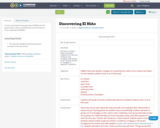
A cross-curricular lesson plan about El Niño for 6th grade math, science, and ELA that covers Common Core standards and NGSS.
- Subject:
- Applied Science
- English Language Arts
- Mathematics
- Material Type:
- Lesson Plan
- Date Added:
- 02/03/2016

A cross-curricular lesson plan about El Niño for 6th grade math, science, and ELA that covers Common Core standards and NGSS.
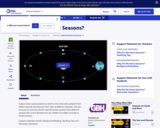
This interactive activity from the Adler Planetarium explains the reasons for the seasons. Featured is a game in which Earth must be properly placed in its orbit in order to send Max, the host, to different parts of the world during particular seasons.
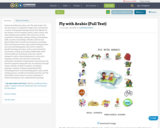
Authored by Belal Joundeya, the "Fly with Arabic" full text document is comprised of eight units, and features a variety of language-learning lessons tied together by fun themes, such as weather, sports, travel, school, and other hobbies and activities. The units focus on the acquisition of listening, reading, writing, and speaking skills, as well as knowledge of Arabic cultures and history.
Most units contain several lessons, including fill-in-the-blank exercises, open-ended writing practice, and word-matching games, that seek to reinforce specific learning outcomes, such as oral and written production, writing, and reading. Additionally, brief cultural drills are included in each unit, and are designed to add a cultural dimension to each unit's language activities. All units also contain self- assessment checklists to help monitor and measure the learner's progress during the unit.
In summary, through using a number of drills to produce vocabulary, grammar, reading, writing, and speaking skills, including pictures, word-matching games, open-ended writing practice, and fill-in-the-blank exercises, the "Fly with Arabic" series seeks to connect all phases of Arabic-learning into one comprehensive package.
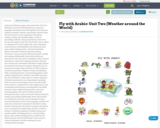
Authored by Belal Joundeya, Fly with Arabic: Unit Two (Weather around the World) features a variety of language-learning lessons tied together by fun themes related to weather, seasons, and weather-specific dress. The unit focuses on the acquisition of listening, reading, writing, and speaking skills, as well as knowledge of Arabic cultures and history.
Unit two is the second chapter in the "Fly with Arabic" series, which is comprised of a total of eight units, each containing several lessons, including fill-in-the-blank exercises, open-ended writing practice, and word-matching games, that seek to reinforce specific learning outcomes, such as oral and written production, writing, and reading. Additionally, brief cultural drills are included in each unit, and are designed to add a cultural dimension to each unit's language activities. All units also contain self- assessment checklists to help monitor and measure the learner's progress during the unit.
In summary, through using a number of drills to produce vocabulary, grammar, reading, writing, and speaking skills, including pictures, word-matching games, open-ended writing practice, and fill-in-the-blank exercises, the "Fly with Arabic" series seeks to connect all phases of Arabic-learning into one comprehensive package.
Unit two is the second chapter in the "Fly with Arabic" series, which is comprised of a total of eight units, each containing several lessons, including fill-in-the-blank exercises, open-ended writing practice, and word-matching games, that seek to reinforce specific learning outcomes, such as oral and written production, writing, and reading. Additionally, brief cultural drills are included in each unit, and are designed to add a cultural dimension to each unit's language activities. All units also contain self- assessment checklists to help monitor and measure the learner's progress during the unit.
In summary, through using a number of drills to produce vocabulary, grammar, reading, writing, and speaking skills, including pictures, word-matching games, open-ended writing practice, and fill-in-the-blank exercises, the "Fly with Arabic" series seeks to connect all phases of Arabic-learning into one comprehensive package.
.
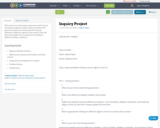
This resource is a lesson plan and project used to teach 3rd graders regional weather patterns. Students will gain an awareness on seasons and how they are different in different regions of the country. They will learn how people have to prepare for and adapt to different weather conditions.

During this course, participants will learn how to center investigations of local scientific phenomena in a Next Generation Science Standards storyline. Course educators will offer instructional strategies and climate and community data to help teachers connect to the interests and identities of students and support understanding of the impacts of climate change. In collaboration with fellow teachers, participants will imagine possibilities for this kind of teaching and learning in their own classrooms through brainstorming possible phenomenon-based storylines local to their own students.
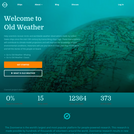
Help scientists recover worldwide weather observations made by Royal Navy ships around the time of World War I. These transcriptions will contribute to climate model projections and improve a database of weather extremes. Historians will use your work to track past ship movements and the stories of the people on board.
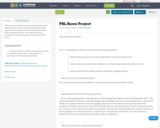
This project is for students in second grade who will be asked to further look at snow and how it affects their daily lives. Through this activity they will learn more about hazardous weather. Then they will make a conclusion as a group based on the information they found.
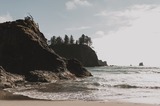
The Washington State coastline is a culturally important place and valuable resource for communities of people, animals, and plants throughout Washington and the United States. As coastal flooding from storms and erosion threatens our coastal environments, communities are forced to make difficult decisions about how to protect themselves, their history, and their livelihoods. In this Storyline, students will learn what coastlines are and why they are important to humans and other types of natural communities. Given the specific weather hazard of coastal flooding, they will test materials and design structures that could be used to help reduce the impacts caused by this hazard.
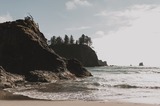
As the climate is changing, one of the many consequences is sea level rise, which is not a standalone factor, but is closely related to erosion and extreme weather/storm conditions. The majority of coastal houses, recreational parks, and other coastal buildings were built as sturdy but stagnant structures that do not adjust well to the changing elements. Coastal homes have been collapsing into the ocean and restaurants have been destroyed by storm waves. The economic damage has been accumulating. In this storyline, students will explore the reasons behind sea level rise looking at thermal expansion, glacial ice melt, and sea ice melt. Students will examine real scenarios of coastal damage in Washington state and evaluate current city and tribal resilience plans. Finally, students will evaluate the constraints of existing challenges and propose strategies for solving these challenges.
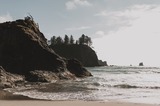
Sea level is rising due to climate changes that result from increased emissions of greenhouse gases. In this storyline, students will explore mechanisms of sea level rise and the impacts on Indigenous peoples along with other groups such as urban communities. Natural hazards such as erosion, storm surges, and flooding are intensified by sea level rise. The effects on natural resources, the economies built from those natural resources, and land usage in general can be predicted by utilizing current and historical data.
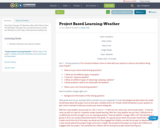
How Does Changes To Weather Affect Me?
Watch How The Weather Changes!
You can find the lesson under my Weebly account: http://educatortrick.weebly.com
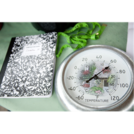
Students will make it a regular practice to record weather data using thermometers, wind vanes and rain gauges.

In this group activity, learners use some common objects and work together to simulate the Coriolis effect. During the challenge, learners make predictions and test different scenarios. This resource includes background information about the Coriolis effect and helpful hints.
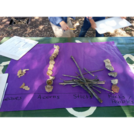
Students will use their knowledge of stem and leaf plots to represent temperature in various locations outdoors.
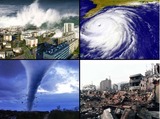
The Third Grade Elementary Framework for Science and Integrated Subjects, Weather, uses the phenomena of extreme weather events. It is part of Elementary Framework for Science and Integrated Subjects project, a statewide Clime Time collaboration among ESD 123, ESD 105, North Central ESD, and the Office of Superintendent of Public Instruction. Development of the resources is in response to a need for research- based science lessons for elementary teachers that are integrated with English language arts, mathematics and other subjects such as social studies. The template for Elementary Science and Integrated Subjects can serve as an organized, coherent and research-based roadmap for teachers in the development of their own NGSS aligned science lessons. Lessons can also be useful for classrooms that have no adopted curriculum as well as to serve as enhancements for current science curriculum. The EFSIS project brings together grade level teams of teachers to develop lessons or suites of lessons that are 1) pnenomena based, focused on grade level Performance Expectations, and 2) leverage ELA and Mathematics Washington State Learning Standards.
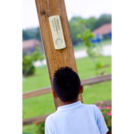
In this lesson, students will take temperature readings in the outdoor classroom, compare them to data from a graph, and discuss the numerical differences between the readings and the data.
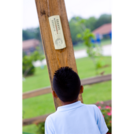
In this lesson, students will take temperature readings in the outdoor classroom, compare them to data from a graph, and discuss the numerical differences between the readings and the data.
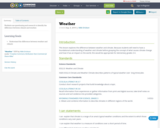
Students use questioning and research to identify the difference between climate and weather.
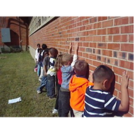
Students will explore the different areas of the garden to determine how warm or cool it feels.